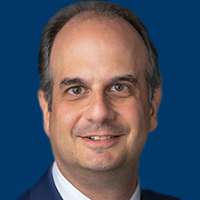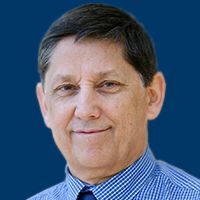Dr. Mitzman on Neoadjuvant Nivolumab Plus Chemotherapy in NSCLC
Brian Mitzman, MD, FACS, FCCP, discusses findings from the phase 3 CheckMate 816 trial in patients with resectable non–small cell lung cancer.
Brian Mitzman, MD, FACS, FCCP, assistant professor, Division of Cardiothoracic Surgery, the University of Utah and Huntsman Cancer Institute, discusses findings from the phase 3 CheckMate 816 trial (NCT02998528) in patients with resectable non–small cell lung cancer (NSCLC).
CheckMate 816 enrolled patients with stage IB to IIIA NSCLC and randomized them to receive either nivolumab (Opdivo) plus platinum-based chemotherapy or platinum-based chemotherapy alone every 3 weeks for 3 cycles, followed by surgery, Mitzman says. After surgery, patients could receive adjuvant chemotherapy at their treating physician’s discretion, Mitzman notes.
This trial’s coprimary end points were event-free survival (EFS) and pathologic complete response (pCR), Mitzman explains. Patients in the nivolumab arm achieved a median EFS of 31.6 months vs 20.8 months in the chemotherapy alone arm, with a hazard ratio of 0.63, Mitzman says. The 2-year EFS rates were 63.8% in the nivolumab arm compared with 45.3% in the chemotherapy alone arm, Mitzman notes. These findings were consistent across most patient subgroups, although the patients who benefitted the most were those with stage IIIA disease, PD-L1 expression of at least 1%, and nonsquamous disease, Mitzman explains. In patients with stage IIIA disease, the median EFS was 31.6 months in the nivolumab arm vs 15.7 months in the chemotherapy alone arm. In patients with positive PD-L1 expression, the median EFS was not reached (NR) in patients who received nivolumab vs 21.1 months in patients who received chemotherapy alone. In patients with nonsquamous disease, the median EFS was NR in the nivolumab arm vs 19.6 months in the chemotherapy alone arm.
Regarding pCR, treatment with nivolumab plus chemotherapy led to a pCR rate of 24.0% vs 2.2% with chemotherapy alone, with an odds ratio of 13.94, Mitzman emphasizes. This benefit was demonstrated across all patient subgroups, regardless of PD-L1 expression, disease stage, and histology, Mitzman says. These findings support the hypothesis that pCR estimates long-term response, Mitzman concludes.



